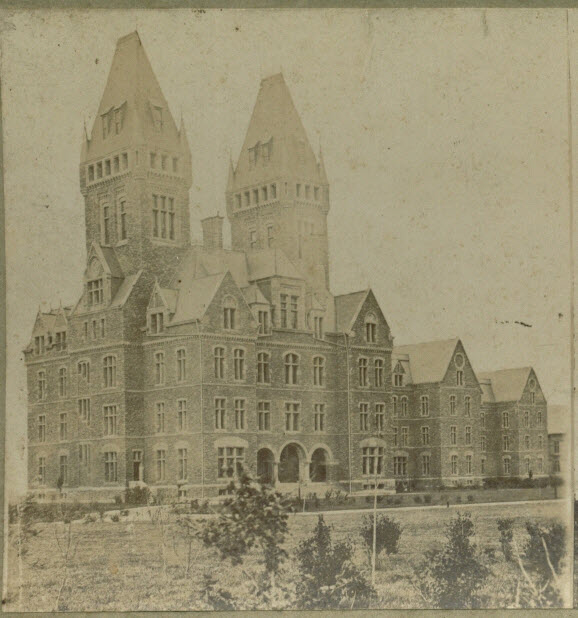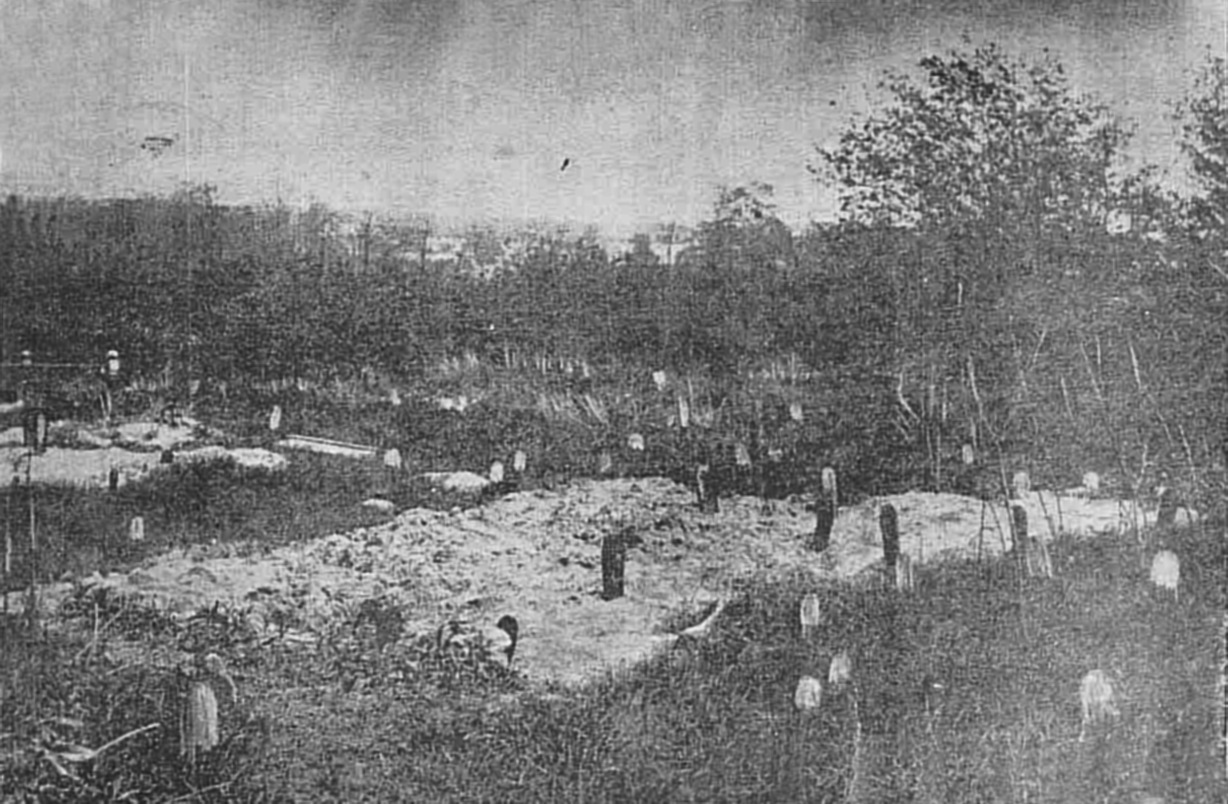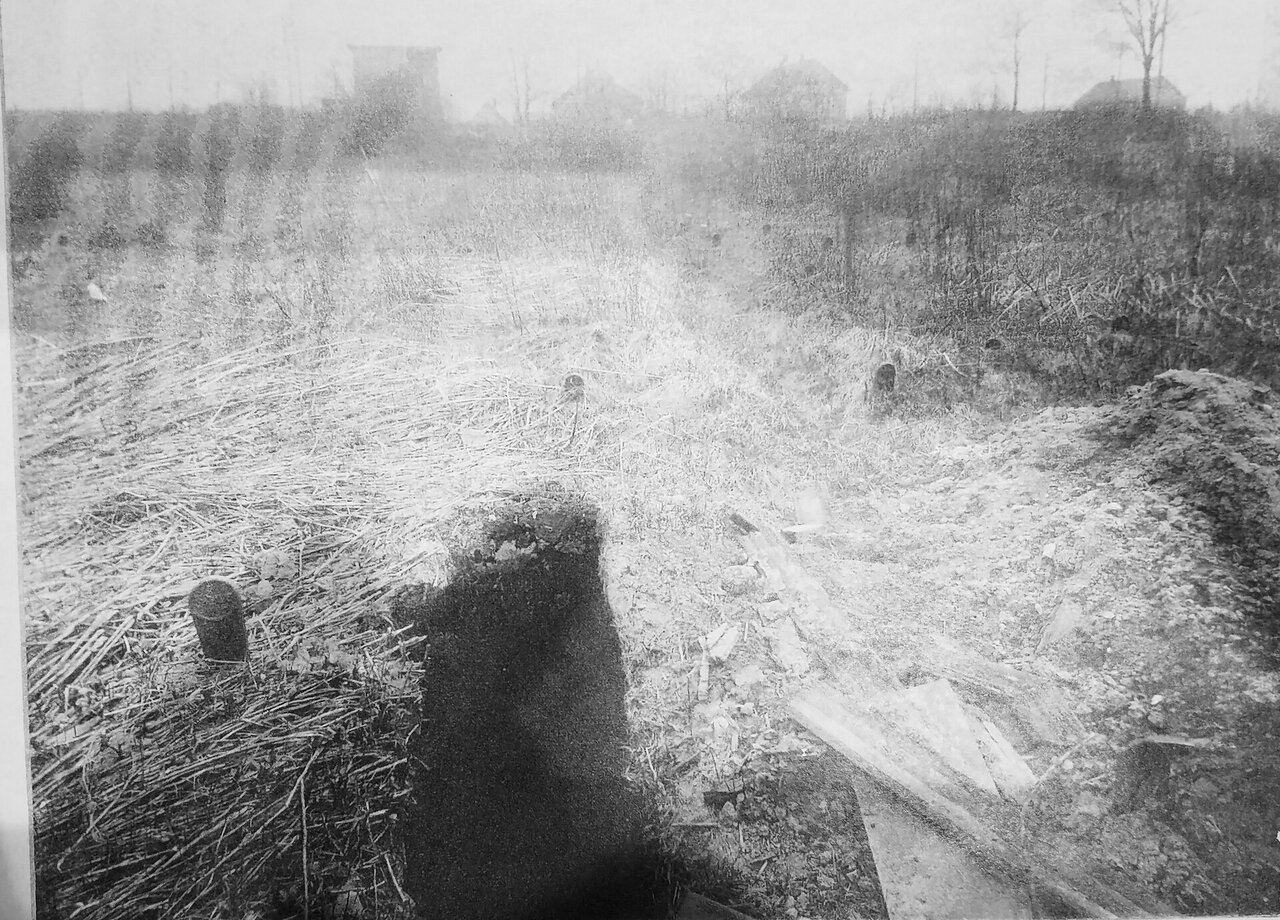
THE STAR CROSSED POTTER’S FIELD:THE HOWARD CEMETERY
Posted September 15, 2017 at 7:00 pm
THE STAR CROSSED POTTER’S FIELD
THE HOWARD CEMETERY
by David Mack-Hardiman
Like a lonely European castle dropped into a busy urban neighborhood, the former Buffalo State Asylum is striking, majestic and mysterious. Architect Henry Hobson Richardson designed the massive structure in Victorian Gothic style with dramatic arches and curved connecting corridors. The center of the complex, constructed of mauve Medina sandstone, is framed by looming twin towers. To the north was a farm which provided both food and occupation for some of the patients. Others worked within the buildings, some creating burial shrouds for the dead.

An early view of the N.Y.S. Insane Asylum at Buffalo
Image courtesy of Museum of disABILITY History
According to the annual reports issued by the Board of Charities, more than 13,000 patients died at the asylum/state hospital from 1880 until 1959. Some died suddenly of acute conditions while others had chronic or contagious diseases. Some patients died of injuries and others committed suicide. The question often asked by descendants, historians and local advocates is, “where were they buried?” While the response of the hospital has typically been, “in local cemeteries”, there were no details. The curious poured through dusty books, old newspapers, microfilms and maps. Cemetery records yielded very little information. There were rumors that there may have been a cemetery on the grounds of the asylum, somewhere on the Northern edge. There is no evidence to support that legend.
In a unique collaboration, documentary filmmaker Julie Casper Roth of Albany, docent Geoff Gorsuch and staff at the Richardson Olmsted Complex (formerly the state hospital building), and this writer met recently with Michael Malyak, a Lackawanna historian. There is evidence in recently uncovered articles that the state hospital used the Howard Cemetery for the burial of some of the patients. Howard Cemetery was located on Ridge Road in what is now the city of Lackawanna. Many other people were buried there, including veterans of the Civil War, children of Polish immigrants, executed criminals and, persons who were unidentified indigents. Records were poorly kept at this graveyard but estimates in 1898 indicated that as many as 7,000 people had been buried there. According to other information at the Lackawanna Public Library, this number may have risen to 8,400. The last burial is said to have occurred there in October of 1919.
The Howard Cemetery
“A Glimpse of the Overpopulated and Neglected Potter’s Field”- Buffalo Courier- November 21, 1902
The Howard Cemetery had a shockingly notorious reputation. According to the Buffalo Courier of January 23, 1898, “because of the shallowness of some burials, a stench pervades, dogs scavenge among the graves, bones are spread about and the place was believed to be a health hazard to the community”. Local newspapers described improper burial techniques in detail.
While the cemetery was left in gruesome neglect, plans were being made to build a new Carnegie Public Library. In 1920, remains from the cemetery were disinterred and moved to what was described as a mobile crematorium. The ashes of thousands of people were placed in a mass grave, a fifteen by twenty foot vault under a concrete slab behind the current library. A memorial at the site contains this description:
The Lackawanna Public Library dedicates this stone in loving memory of the indigent, the forgotten, the unknown. May they rest in peace. Site of Howard’s {sic} Cemetery, a potter’s field, 1858- 1920.
There is evidence that some bodies were left behind in the mass exhumation. During further construction in the 1960’s and 1970’s, more human remains were unearthed at the site of the Howard Cemetery. It is not known where patients were buried after this cremation occurred. We will continue to search for more information about these thousands of Americans, anonymous in death.
The Howard Cemetery on Ridge Road
Photo Courtesy the Lackawanna Public Library
Looking closely, there are rounded cast iron grave markers visible. In the front center of the photograph, there appears to be an open grave.
SOURCES
Western New York Genealogical Journal, Vol. XXIX, No. 4, March 2013, “The Howard Cemetery” by Glenn R. P. Atwell
Buffalo Courier, May 13, 1902 and January 23, 1898
Buffalo Courier and Evening News, February 25, 1903
Buffalo News, August 30, 1902 and May 18, 1902
Buffalo Express, January 5, 1903
Buffalo Evening News, January 26, 1898, May 6, 1902, July 11, 1902
Forest Lawn Board of Trustees Meeting Minutes, May 20, 1902
The History of Lackawanna
Michael Malyak, Lackawanna Historian and the Lackawanna Public Library
- Category
- Uncategorized
- Tags
- Buffalo State Hospital | Cemetery Restoration | Lackawanna
Comments
Valerie
Posted February 11, 2020 at 3:28 pm
Patrece Ryan
Posted October 21, 2018 at 12:00 am



Patrece Ryan, no. Those are wards that are spelled out in the city charter for Lockport. "WARD 2 shall include that portion of the City of Lockport bounded and described as follows:
Beginning at a point which is the intersection of the center line of Genesee Street and Pine Street; thence proceeding south along the center line of Pine Street to its intersection with the center line of High Street; thence proceeding east along the center line of High Street to its intersection with the center line of Locust Street; thence proceeding southeast and south along the center line of Locust Street to its intersection with the center line of Lincoln Avenue; thence proceeding east along the center line of Lincoln Street and continuing along the center line of Lincoln Street, also being the south Lockport City line; thence north along the Lockport City line to its intersection with the center line of Royal Lane, also being the east Lockport City line; thence continuing north along the center line of Royal Lane, also being the Lockport City line, to its intersection with the center line of Akron Street; thence proceeding northwest along the center line of Akron Street to its intersection with the center line of High Street; thence proceeding west along the center line of High Street to its intersection with the center line of Erie Street; thence proceeding north along the center line of Erie Street to its intersection with the center line of Lewis Street; thence proceeding west along the center line of Lewis Street to the center line of Washburn Street; thence proceeding north along the center line of Washburn Street to the center line of Genesee Street; thence proceeding west along the center line of Genesee Street to its intersection with the center line of Pine Street, the point or place of beginning."